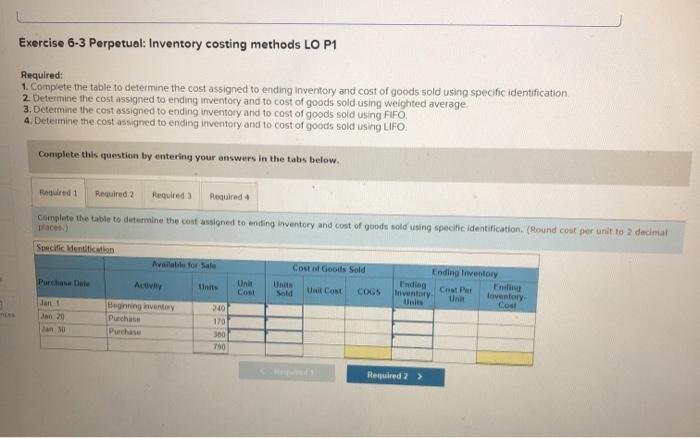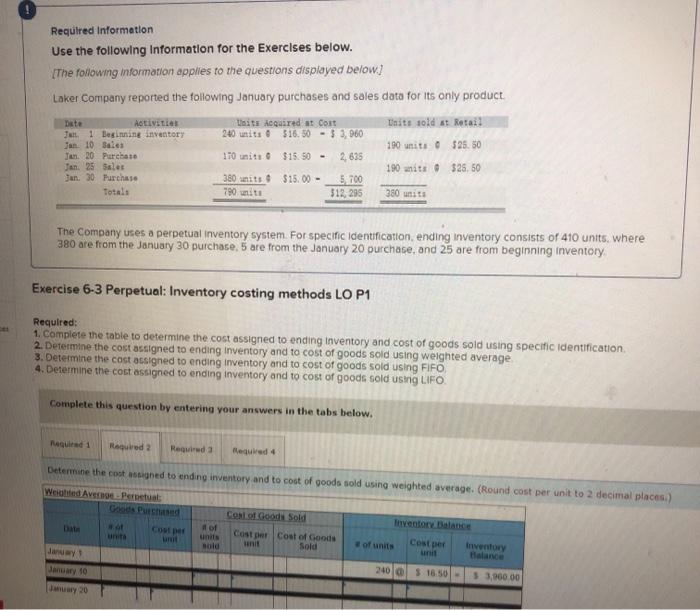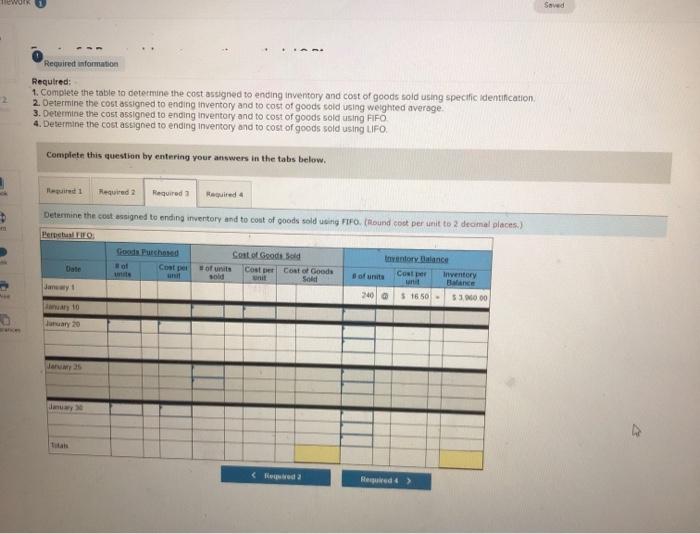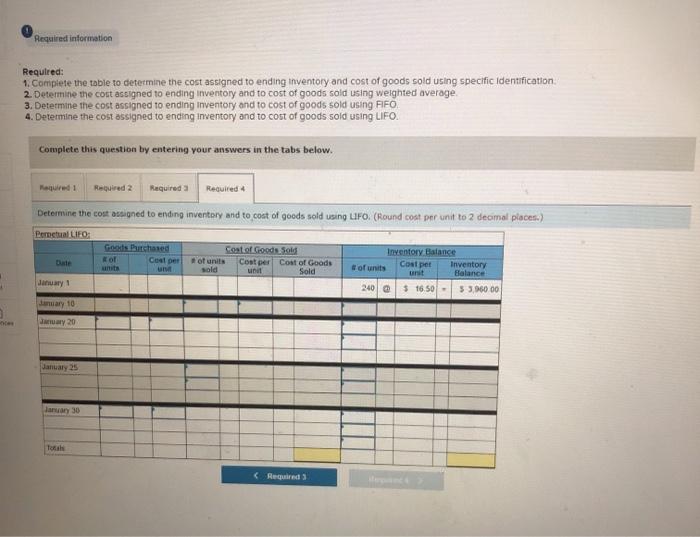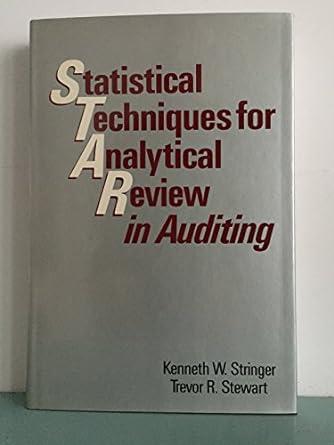Exercise 6-3 Perpetual: Inventory costing methods LO P1 Required: 1. Complete the table to determine the cost assigned to ending inventory and cost of goods sold using specific identification 2. Determine the cost assigned to ending inventory and to cost of goods sold using weighted average 3. Determine the cost assigned to ending inventory and to cost of goods sold using FIFO 4. Determine the cost assigned to ending inventory and to cost of goods sold using LIFO. Complete this question by entering your answers in the tabs below. Required Required 2 Required 3 Required 4 Complete the table to determine the contained to ending lewentory and cost of goods sold using specific identification, (Round cont per unit to 2 decimal Specific Hentication able to Sale Cost of Goods Sold Purchase Dale Active Units Unit Cost Ut Cost COGS Ending Inventory Ending Coor Inventory Un Inventory Cost Beginning inventory Purchase Jan 20 0 2:40 170 360 750 Required 2 > 190 units $25.50 2635 190 units $25.50 JE 10 Sales Jan 20 Purchase Je 25 Sales 30 Purchase Totals 170 units $15.50 - 380 units $15.00 - 790 units 5,700 $12, 295 390 units The Company uses a perpetual Inventory system. For specific identification, ending inventory consists of 410 units, whe 380 are from the January 30 purchase, 5 are from the January 20 purchase, and 25 are from beginning inventory Exercise 6-3 Perpetual: Inventory costing methods LO P1 Required: 1. Complete the table to determine the cost assigned to ending Inventory and cost of goods sold using specific identification 2. Determine the cost assigned to ending Inventory and to cost of goods sold using weighted average. 3. Determine the cost assigned to ending inventory and to cost of goods sold using FIFO. 4. Determine the cost assigned to ending inventory and to cost of goods sold using LIFO. Complete this question by entering your answers in the tabs below. Required: Required 2 Required Required 4 Determine the cost assigned to ending inventory and to cost of goods sold using weighted average. (Round cost per unit to 2 decimal Weighted Average - Perpetual: Goods Purchased Cost of Goods Sold Inventory Balance #of #ot Date Cost per Cost per Cost of Goods units units unit Inventory unit #of units sold unit Balance January 1 240 @ S 16.50 - $ 3.960.00 January 10 January 20 Cost per Sold Average cost January 25 January 30 Totais 190 units $25.50 2635 190 units $25.50 JE 10 Sales Jan 20 Purchase Je 25 Sales 30 Purchase Totals 170 units $15.50 - 380 units $15.00 - 790 units 5,700 $12, 295 390 units The Company uses a perpetual Inventory system. For specific identification, ending inventory consists of 410 units, whe 380 are from the January 30 purchase, 5 are from the January 20 purchase, and 25 are from beginning inventory Exercise 6-3 Perpetual: Inventory costing methods LO P1 Required: 1. Complete the table to determine the cost assigned to ending Inventory and cost of goods sold using specific identification 2. Determine the cost assigned to ending Inventory and to cost of goods sold using weighted average. 3. Determine the cost assigned to ending inventory and to cost of goods sold using FIFO. 4. Determine the cost assigned to ending inventory and to cost of goods sold using LIFO. Complete this question by entering your answers in the tabs below. Required: Required 2 Required Required 4 Determine the cost assigned to ending inventory and to cost of goods sold using weighted average. (Round cost per unit to 2 decimal Weighted Average - Perpetual: Goods Purchased Cost of Goods Sold Inventory Balance #of #ot Date Cost per Cost per Cost of Goods units units unit Inventory unit #of units sold unit Balance January 1 240 @ S 16.50 - $ 3.960.00 January 10 January 20 Cost per Sold Average cost January 25 January 30 Totais
